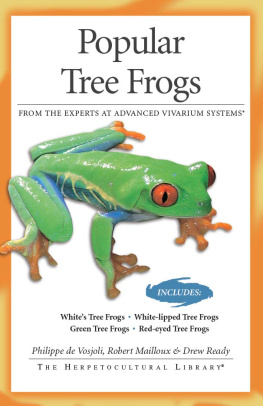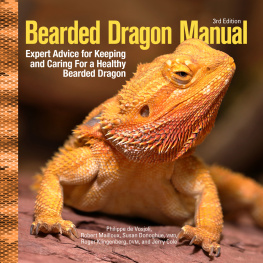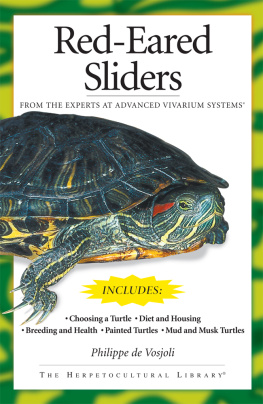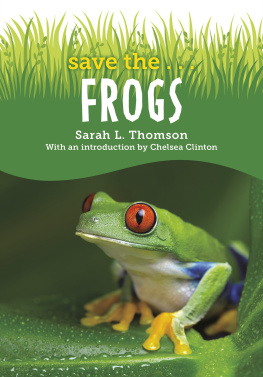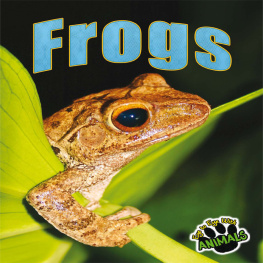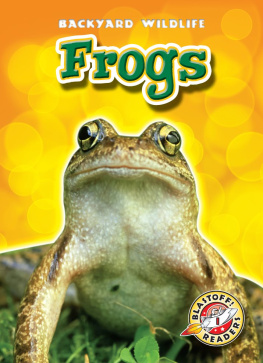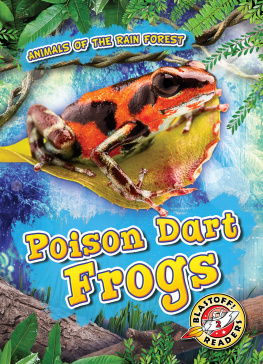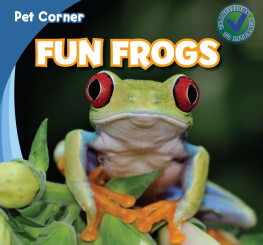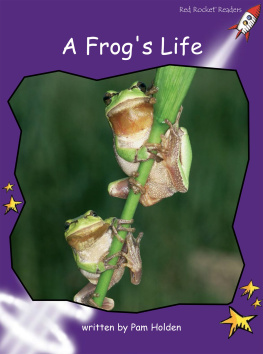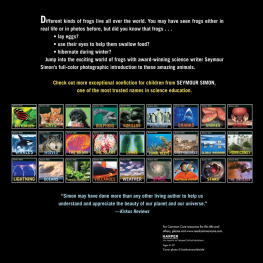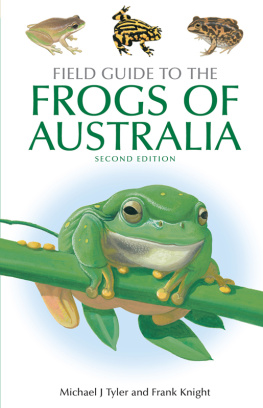All photos by Philippe de Vosjoli except where otherwise indicated Cover photography by David Northcott.
The photographs in this book are courtesy of: Zig Leszczynski, p.8; Paul Freed, pp. 19, 51; Bill Love, pg. 38; David Northcott, courtesy of Natures Lens, pp. 55, 57, 58, 59; Michael Ready, pp 31, 35; D.B. Travis, pp. 7, 27, 37, 39, 49, 53, 56, 71.
Copyright 1992, 1998, 2004, 2009 by Advanced Vivarium Systems
All rights reserved. No part of this publication may be reproduced or transmitted in any form or by any means, electronic or mechanical including photocopy, recording or any information and retrieval system, without permission in writing from the publisher, except by reviewer, who may quote brief passages in a review.
LCCN: 96-183295
ISBN: 978-1-882770-77-9
eISBN: 978-1-620080-46-7

An Imprint of I-5 Press
A Division of I-5 Publishing, LLC
3 Burroughs
Irvine, CA 92618
www.facebook.com/i5press
www.i5publishing.com
We want to hear from you. What books would you like to see in the future? Please feel free to write us with any comments on our AVS books.
Printed in Singapore
10 9 8 7 6 5 4 3
CONTENTS
INTRODUCTION
R ecently, United States herpetoculturists have focused on a more naturalistic approach to keeping reptiles and amphibians. Many keepers now house their animals in naturalistic vivariacaptive environments that simulate certain essential characteristics of an animals natural habitata trend that has led to increased interest in the small animals that thrive in these new kinds of enclosures.
Among the best vivarium animals are tree frogs, stunning creatures that perch on virtually anythingincluding glass walls, branches, and leavesand make for incredible display animals. Certain species of these frogs even can be kept with other small frogs and lizards in a community vivarium, allowing keepers to create vibrant habitats in their own home. Unfortunately, just as the interest in tropical amphibians is increasing, availability appears to be diminishing, the result of lack of knowledge, lack of standards for commercial exploitation, protective legislation (some of which is unsound), habitat destruction, and environmental and climatic changes. If people are to enjoy frogs and other amphibians in the future, sound conservation, research, and management of various species must receive immediate attention, and herpetologists must establish self-sustainable populations of as many species as possible.
The authors original goal was to write a simple, basic book on the care of popular tree frogs, but during the writing process it became obvious that successful frog keeping requires certain skills and knowledgemuch like keeping tropical fish. Although there are a number of books about the care of amphibians, several were written by authors with little or no experience in keeping or breeding frogs, and few contain any valuable information.
This book, written by experienced and recognized frog herpetoculturists, focuses on the care of popular tree frogs now sold in pet stores. It covers many important topics, from acclimating imported species to housing, feeding, and captive-breeding. It is a practical manual for the serious hobbyist who cares about the welfare of his or her animals.
CHAPTER 1
GENERAL INFORMATION AND SELECTION
What are Tree Frogs?
T ree frog is the popular term for arboreal and semiarboreal, nocturnal frogs that have toe pads at the ends of their digits. The common name tree frogis usually reserved for members of the family Hylidae, but the popular herpetocultural definition also includes the glass frogs (family Centronelidae), reed frogs (family Hyperolidae), and flying frogs (family Rhacophoridae).
Selecting Tree Frogs
If you are new to keeping tree frogs, your best bet is to begin with a species that has simple, clear-cut care requirements; possibilities include Whites tree frogs (Litoria caerulea), white-lipped tree frogs (L. infrafrenata), green tree frogs (Hyla cinerea), and Cuban tree frogs (Osteopiius septentrionalis). Other tree frogs require some experience, particularly if they are wild-caught imports, but, if you follow the instructions in this book, you also should have success with moderately difficult-to-keep species, such as the ever-popular red-eyed tree frogs.
As a rule, species that require cool, temperate conditions, or hail from a cloud forest or tropical rainforest tend to be more difficult to keep than the more adaptable temperate and subtropical species. This is usually because cloud-forest and rainforest species have specific habitat requirementssuch as a particular landscape, temperate range, relative humidity range, or air flowthat need to be duplicated if the frogs are to survive for a long time. However, researching the habitat and niche of particular tree frogs, acquiring experience at establishing frogs, and setting up the right type of vivaria will allow you to successfully keep and breed these more difficult species.

A rare blue axanthic green tree frog.
This book focuses on the care of easy-to-keep and readily available species, but also includes information on gliding tree frogs, an appealing species that has more complex care requirements.
The first step to keeping tree frogs successfully is to select the species that you can comfortably accommodate. The second step is to select potentially healthy animals (see below).
Captive-Bred Versus Wild-Caught Specimens
Whites tree frogs are captive-bred in large numbers in the United States and are generally easy to rear to adulthood. Other captive-bred species are available less frequently and, due to the small size and special requirements of their young, are often more difficult to rear. Wild-caught adults of the popular species mentioned in this book (with the exception of gliding tree frogs) are relatively easy to establish in captivity and are probably as good a choice as captive-bred frogs. However, keeping more difficult species, whether wild-caught or captive-bred, will prove challenging, and very possibly disappointing, to inexperienced herpetoculturists.
Selecting Healthy Tree Frogs
To have success with tree frogs, you must select healthy specimens. The following guidelines will help you make the right choice:
1. Select species that you can accommodate. Research the needs and vivarium design requirements of whatever species you plan to purchase, and make sure you have the time, money, and space to meet their requirements. Your frogs will not survive unless you provide them with the proper captive conditions.
2. Observe the animals you plan to purchase. Generally, tree frogs that perch on the glass sides or the landscape structures of a vivarium prove healthier than those that remain on the ground. However, this is only a guideline, not an absolute rule. Occasionally, if a store owner or seller keeps their frogs in the wrong kind of vivarium, stressed tree frogs may seek terrestrial shelters or specimens may move to the ground to reduce dehydration or find cooler temperatures.
3. Carefully inspect the animal. It should not have sores, lumps, swollen legs, or clouded eyes. Its body should appear rounded, and the outlines of its hip bones, backbone, and skull should not be prominent.

A healthy Whites tree frog has very smooth rounded contours.
Next page
